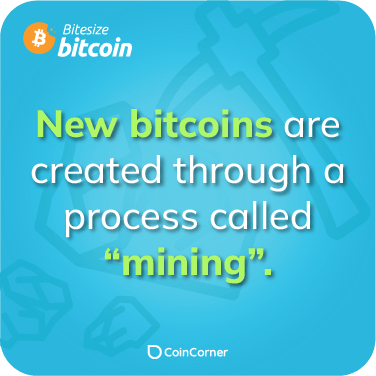What is Bitcoin mining?

The process of mining is fundamental to the creation of new bitcoins and the operation of the Bitcoin network. Here's an expansion on how new bitcoins are created through mining:
1. Mining Nodes
Mining involves specialised participants in the Bitcoin network known as miners. These miners contribute computational power to solve complex mathematical problems, which is essential for validating and securing transactions on the network.
2. Proof of Work
The mining process utilises a consensus mechanism called Proof of Work (PoW). Miners compete with each other to solve a cryptographic puzzle by performing numerous calculations. The first miner to solve the puzzle and find a valid solution gets the opportunity to add a new block of transactions to the blockchain.
3. Block Creation
Miners group together a set of pending transactions into a block. They then append a header to the block, including a reference to the previous block's hash, a timestamp, and a unique identifier called a nonce. Miners manipulate the nonce value repeatedly to generate different block hashes until they find a hash that meets specific criteria, known as the target difficulty.
4. Difficulty Adjustment
The target difficulty is dynamically adjusted by the network every 2,016 blocks (approximately every two weeks) to maintain an average block time of around 10 minutes. If more miners join the network, increasing the computational power, the difficulty increases. Conversely, if miners leave, the difficulty decreases to maintain the desired block time.
5. Block Validation
Once a miner discovers a valid solution and generates a block with an acceptable hash, they broadcast it to the network. Other nodes in the network verify the block's validity by checking the proof of work and validating the included transactions. If the block passes validation, it is added to the blockchain, and the miner is rewarded.
6. Coinbase Transaction
Each newly mined block contains a special transaction called the coinbase transaction. This transaction is the mechanism through which new bitcoins are created and awarded to the miner. Along with the newly minted bitcoins, the miner may also include transaction fees collected from the included transactions.
7. Halving Event
The Bitcoin protocol includes a built-in mechanism known as the "halving." Approximately every four years (210,000 blocks), the block reward earned by miners is reduced by half. This event ensures a controlled and predictable issuance of new bitcoins, gradually reducing the rate at which they enter circulation. The most recent halving occurred in May 2020, reducing the block reward from 12.5 to 6.25 bitcoins.
8. Total Supply
The issuance of new bitcoins through mining is limited by the Bitcoin protocol. The maximum supply is capped at 21 million bitcoins. As mining continues, the number of new bitcoins created decreases over time, approaching zero as the supply reaches its limit. This scarcity contributes to Bitcoin's value proposition as a digital asset with limited availability.
Mining in the Bitcoin network requires significant computational power and energy consumption. Miners often use specialised hardware like ASICs to perform mining operations efficiently. As the network's difficulty increases, mining becomes more competitive and resource-intensive.
Share this fact:





